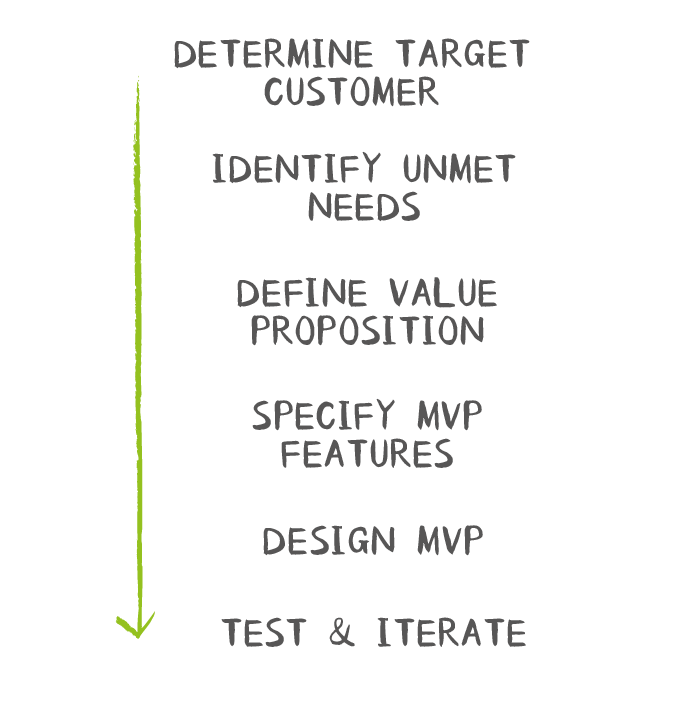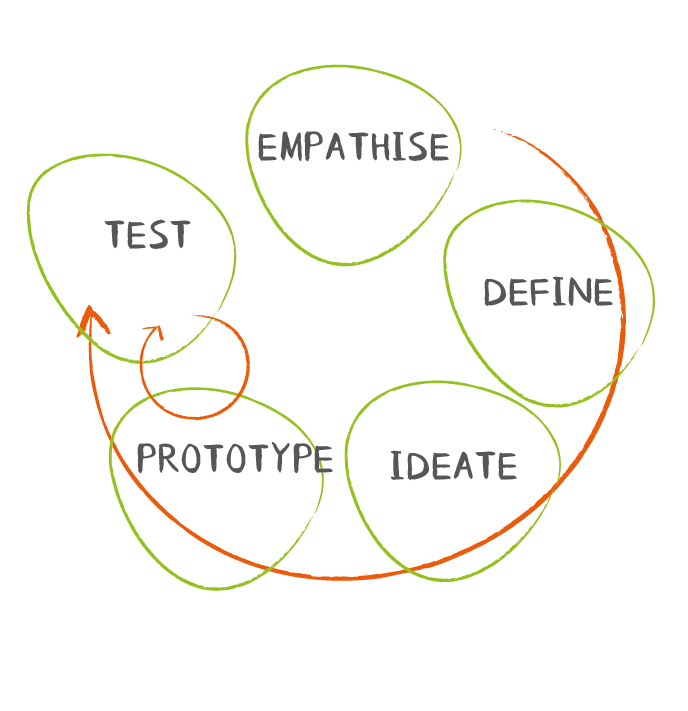What’s the difference between Agile, Lean and Design Thinking?
And which approach to designing products and services is best?
Here's a summary of the different approaches and things you should consider when applying these methods in your organisation.
AGILE
Initially developed by software engineers to deliver feature upgrades, Agile breaks work up into short batches or sprints. Run by small self-organising teams led by a facilitator (the scrum master), Agile prioritises work based on a backlog of deliverables which address defined user-centred needs (called user stories). After a sprint, the team pause and reflect on their learning. The Agile approach includes regular standups to share progress and holds retrospectives to evaluate the priorities and lessons learned before committing to the next sprint.
After Chris Sims & Hillary Louise Johnson: Scrum
LEAN PRODUCT DESIGN
Lean works on the assumption that a product development project is an experiment that requires hypotheses to test to determine if you have a viable concept which offers consumer value and is feasible to deliver. A Lean process for product development can follow six steps:
Determine your target customers
Identify unmet customer needs
Define your value proposition
Specific a minimum viable product (MVP), its features and benefits
Create an MVP for user testing
Fast, iterative cycles of user testing to evaluate hypotheses, optimise the features and user experience to create a unique solution to customer needs
After Dan Olsen: The Lean Product Playbook
The aim is to reduce risk and deliver unique customer value faster at the least cost. The output of Lean is an MVP (minimum viable product) that is tested and optimised before being handed over to the development team.
DESIGN THINKING
Design Thinking uses some of the above techniques of experimentation and hypothesis testing but does so through the lens of customer understanding and creative exploration. The approach starts with understanding target users' lived experiences for a given context to define their unresolved needs. Then, through a series of steps, the team ideate, prototype, test and optimse ideas to determine fit with users' needs and feasibility (can we make it, should we make it).
What's the best agile approach for product and service design?
Most organisations adopt elements from these approaches to create processes that work for their circumstances. Each method has advantages and disadvantages.
Check out our design sprints. This flexible approach incorporates elements of agile, lean and user-centred design based on our experience working on 100s of innovation and service design projects.
Best practice principles to keep in mind.
Short Sprints of work
Working on smaller bite-sized chunks keeps you focused, and you work faster and iterate quicker based on feedback. Align on a work plan, desired outcomes and the minimum work required to achieve those outcomes. Working in short cycles minimises risk and maximises learning. At the end of the cycle, evaluate whether you continue as planned to the next phase, course-correct or kill the project.
Continuous learning
Capture lessons learned as you go. Challenge your hypotheses and assumptions at each step. Be open to learning; this will enhance team performance and deliver better products.
Be customer-centric
Customer-centricity is a bit of a buzzword these days. You have to ask:
How often do you interact with our customers in the context in which they use our products or services?
Can you empathise with their frustrations, hacks and workarounds?
Do you understand what they are trying to accomplish?
How do you involve customers to get feedback quickly on our prototypes to avoid wasting time and resources?
With this knowledge, you will unlock a deeper understanding of the value they seek and how to design and deliver more relevant and unique solutions.
Become a self-organising team
Agile methods delegate work at a team level.
Research by Gartner shows that in a flexible-hybrid working environment, teams that determine how and when they engage with each other become high-performing.
Leaders should grant trust to the team, hold them accountable for each cycle of work, and give them space to determine how best to solve problems within a given framework.
Governance
What gets measured gets done!
Firstly, you must align your sprint cycles and projects with your business goals. Ensure the cadence of work delivers a balanced portfolio of initiatives, i.e. closer-in quick wins, which are low risk, with more complex but potentially higher reward projects. Allow for failures and course corrections, as not every project will launch, and you want people to pivot and capitalise on new information or insights when they come to light.
Secondly, reward those behaviours that boost learning, collaboration at pace, experimentation and user-centricity.
Need to unlock more nimble and agile approaches to innovation? Get in contact, we’d love to help.
Want to equip your team to be more agile and resilient to change? Check out our training programmes
Sources: Chris Sims & Hillary Louise Johnson. Scrum: a breathtakingly brief and agile introduction. Dan Olsen. The Lean Product Playbook.


